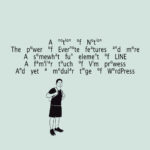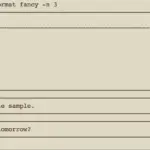
Games should be fun and break up the monotonous regularity of class and lecture. We tend to remember interesting classes or events more, or at least look forward to the lessons.

Here are 7 simple note-taking games I hope you and others can enjoy while learning:
- Exchange notes randomly
- Guess who or why he wrote this note
- The top note idea on the tree today
- I/This ____ because _______
- Write a note that tells a compelling story in a few words
- Write a note for yourself or someone to read tomorrow, one year, and ten years later
- Summary and gist
In my diploma days, there was a funny lecturer who cracked lots of jokes and entertained the students with high turn-up rate for his lectures, and till this day I can still remember him. Perhaps games for our note-taking and learning purposes can be employed to similar effect?
Exchange notes randomly
This is a simple game where everyone writes a short and interesting note, write a long unique number on it, folds it and puts it in a box. Each person can come up and draws one random note, reads and writes a constructive and meaningful reply to it before folding and handing it back. The notes can be anything that is memorable or interesting e.g a poem, chorus, programming code, equation, drawing, calligraphy, haiku, or a reflection on life. Once all notes are collected back, mix them up, and everyone can come together and collect their notes based on the unique number to maintain anonymity and privacy.
The fun in such a game is to have a different or even surprising perspective on your thought or idea. Please remind all participants to be positive and honest in their notes and replies. Getting responses in this way can be memorable because it is personal and thoughtful.

Guess who or why he wrote this note
Everyone writes a short, positive and special note, fold it up and hand in. A speaker reads aloud each and every note in turn to all participants with seats in a circular fashion and prompts anyone who can quickly guess who and why a note was written in a constructive manner. Some responses may be funny or interesting but it is fine as long as they do not ridicule or hurt others’ feelings.

Alternatively, we may lift an appropriate passage from a literary work for discussion and everyone can start taking notes in a shared Google Doc document on who or why the author wrote that, or post it in a Facebook group for comments.
Understanding the reasons behind the writings can offer a deeper insight into superficial readings; This may also help to train in psychological studies and figure the reasons behind their behavior and thinking.
The top note idea on the tree today
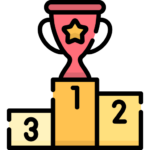
Everyone in the class, group or family write a share-worthy note each and hangs it on the tree or board for all to read. Evidently, the winning note will be hanged on the top of the tree. This can be a weekly or even daily activity to encourage frequent communication between family, mates, and members.
We may find tea recipes, training tips, philosophical advice, study notes, smart ideas, musical compositions, and hand drawings for selection. The best note may be the one that stands to be most beneficial in the long run.
Perhaps a family member may take a picture or two of dishes he/she cooked to remind others to eat when they return home and pin the food pictures with notes on the notes tree. Sometimes, the most basic gestures are the most comforting and touching.

Vegetarian stir-fried dumpling or gyoza
Pinup a food picture note to remind our loved ones to take their meals.

WhatsApp or send a chat message picture as a note for friendly reminders.

An interesting note-taking activity to stir up memorable fun is to share and take notes of intriguing objects and beautiful or weird stuff.
The notes we can take can be triggered with questions, breakdown of elements or with any notes of particular observation as long as it is relevant and objective.
Every student in the class may share an object or stuff of interest he or she came across for the past week or so. Or it may be a certain piece of note-worthy information suitable for sharing with others. Perhaps there are no winners or losers here, just the participation for note-taking fun should suffice.
For example, students may write a note list of below pictures with whichever approach they are comfortable: H4W (how, what, why, when, who), analyze each layer and element, or any constructive ideas that come to mind pertaining to the picture.





Possible questions for notes: What can a durian taste and smell like? How to paint suggestive clouds strokes with a brush? What can the soft thorn fruit look like on the inside? What are the possible ingredients for gyoza? Why are cats graceful and cute like that? What are the original and creative uses of this unique furniture piece and how to construct it?
Also, this can also be a good time to train students’ analytical thinking and research skill.
I/This ____ because ______
Everyone can participate in this quick game where each just has to note down and tell a reason for their actions or based on what they learned from a textbook. A teacher or organizer may prepare the notes with the first blanks fill-in and the participants have to fill in the second part. Or reverse with answers in the first part to the pre-filled second part so students can practice reverse engineering or deduction thinking. Sentences should be of notable significance, and meaningful for learning purposes. The advantage of sharing in this way is to promote logical thinking and sharing.
For example:

This type of notes is similar to questions format suitable for examination testing conditions. If you know something not many do, writing such notes will prompt people to think and learn to find solutions for themselves, as opposed to just reading and memorizing without a deeper understanding.

Tip: Wouldn’t you set exams questions this way if you are the examiner?
Write a note that tells a compelling or emotional story in a few words
There is no restriction on how few words or how much to elaborate for an explanation. Some notes are best left as it is. This game can be fun, heart-breaking or touching depending on the participants’ notes. The key is to capture the audience or reader’s heart in a laconic phrase or even just a word. The selected note-taker can share the story behind the succinct note if he wishes so.

Write a note for yourself or someone to read tomorrow, one year, and ten years later

Write paper notes, keep it in a box and put it away to be open in a future date. Alternatively compose an email, for example in Gmail (ends up in schedule folder), and schedule sends for tomorrow, one year or ten years later. If you do not wish anyone else to read it, send it to your own email address. It may be interesting and fun to note how one may predict what may happen in the future or looks back what we thought and wrote before. Those who review study notes and important information can use this technique to quickly and effectively take action.
Sometimes, I email internet links to myself so I can evaluate them later when I see the bold unread email titles because it is fast and simple. Perhaps a class or group of friends can come together on graduation day and compose a group note with Google Docs and schedule the email to be sent in one and ten years later to all the contributors. Say, for example, every one may write what they think they will become in the future, what if it does not happen and their contingencies.

We may also write a weekly note to ourselves to help us check if we did what we realistically plan for the week ahead. If we find that we usually do not keep up or even deviate from our original plans or goals, then perhaps we may evaluate where and why this is happening. Is it because of a quitter attitude, setting impractical goals, not resisting external and internal temptations and distractions, or too many obstacles? I suggest being clear in identifying what are the root causes and take the effort to address them with solutions one step at a time.
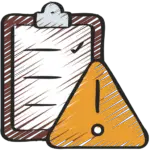
Summary and gist
Let students summarize a paragraph or a whole chapter in a sentence. More importantly, succinctly pull out the essence of the teaching! Being able to understand and apply the teaching essence is key to future implementations and benefits. In my opinion, a summary may or may not be the gist or essence of the whole matter. Once everyone has summarized and possibly extracted the essence, the answers will be handed-in or posted for all to read.

The advantage of this game not only evaluates the differences of perspectives between students but also the quality of the observation and insight of matters. One can probably tell the character, integrity, and capabilities of the note-takers just from the content of the notes. Even a terse sentence with the choice of words will reveal some information about the person.

Comparing summaries and gist can be fun because people have different angles and thinking. He or she may not get the gist of the text in the conventional sense, but he may have explored an unchartered territory few went. Be outstanding among the masses.

Take for example the simple squat exercise: A textbook instructions may detail how to space the legs, keeps the back straight while slowly going down and up, and repeat for ten times over three sets.
A general summary could be: Slowly and repeat squats with legs space without crooking the back to avoid injury and bad form.
The gist could be: Feel the thigh pull, including hamstring without incurring injury.
When one understood the reason and meaning behind the squat routine, he may improvise and create new forms, exercises, and equipment to specifically target those muscles.
For example, based on this essence, he may squat and hold for minutes at the posture till he felt the thigh pull like a ‘horse stance’ in old KungFu movies, gradually increase the efficacy with more dumbbell weights, change to another form like pulling a heavy tire with a rope or classic weightlifting, or create leg presses and curls machines for specific workouts. His goal is to contract the thigh muscles effectively and safely.
Note: I am not a professional physiotherapist or doctor, just hoping to illustrate the importance of directly addressing the core of the matter.
Exercise for a note-taking game with humor:
Students may read up a funny passage, chapter or even the whole humorous book and either summarize, review or take notes of why and how the best moments make you laughed. I choose P.G. Wodehouse’s book Carry On, Jeeves for its popularity in humor, and this book has different formats ranging from paperback to Kindle and audio.

This can be valuable for aspiring writers and teaching students to have fun taking summary notes. Each student should get a chance to read out their summary for comparisons and feedback, and remind them to keep an eye out for practical possibilities.

On the other hand, students and adults alike has to learn not to be attached, social media comments or otherwise.
Conclusion
Many if not all the note-taking games can include pictures and drawings instead of the written note, and even deliver more impact for its intended purpose, for example in illustrating beauty.
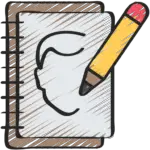
We do not have to strictly play these notes games. For example, simply write a kind or casual note regularly to a busy family member we often do not get to see and receive his/her replies in a personal game-like fashion. Remember it is the quality of the note that matters, not just the entertainment value in the game.

Summarizing or gist extraction may be a creative skill or art in itself. It also reflects how we perceive a certain idea or topic.
Do a kind act today for someone or write a heart-warming note to cheer him up.

Have fun with learning.
Related Questions
Are there more note-taking activities for engagement?
Write a loving note for your pet or favorite animal.
The note may start with: I love you because______. Readout and hug him/her while recording the video so you may remember by as a future tribute or eulogy. This kind of notes can be one of the most memorable and emotional ones we can act upon. Pets usually leave us first, and we may only have the memories, photos, video recordings, and notes to remember them by when we miss them …

Write a grateful or thoughtful note for someone and show it in a surprising way
It may be Hallmark All-Occasion, Kraft All-Occasion (with envelopes), Kraft Thinking-of-You, Animal-Selfies, Floral Thank-You, Pet-Love, Steampunk Cats, Watercolor Hummingbird, Rustic Birds, or Hallmark Watercolor-Blank notes. We may place it for the recipients to find in pleasant but unexpected ways. Please note that these general note cards can also be used for our studying purposes with associations and memorization.

Write to new pen pals with Slowly App
One may write letters or short notes to someone in the Slowly App, and build a digital stamps collection while at it. It is intriguing to note that not many apps can be personal in forming human connections. It is a modern way to continue the pen pals tradition in the internet age. You can choose how often to write your replies or not.
An idea for a note-taking game in a writing class is to connect with Slowly App pen pals and share with permissions the notes or letters posted and received for inspirations.
Please also read Top 9 Fun Activities For Note-Taking and More Fun Activities For Note-taking for more note-taking fun ideas.
Can we learn by playing computer games in a classroom environment? Should educators design games for classroom learning?

This research by Pivec and Kearney (2007) shows the results of successful learning from educational games and even application of knowledge beyond the games with case studies are included. Moreover, another study by Razak and Connolly (2013) also supports the positive feedback from students for learning from digital games. Currently, most games on popular console platforms are not educational in nature, hopefully, we can see a great change in this aspect for the benefit of future generations.
Answer: The guarding dog did not make a fuss when the horse was stolen.


